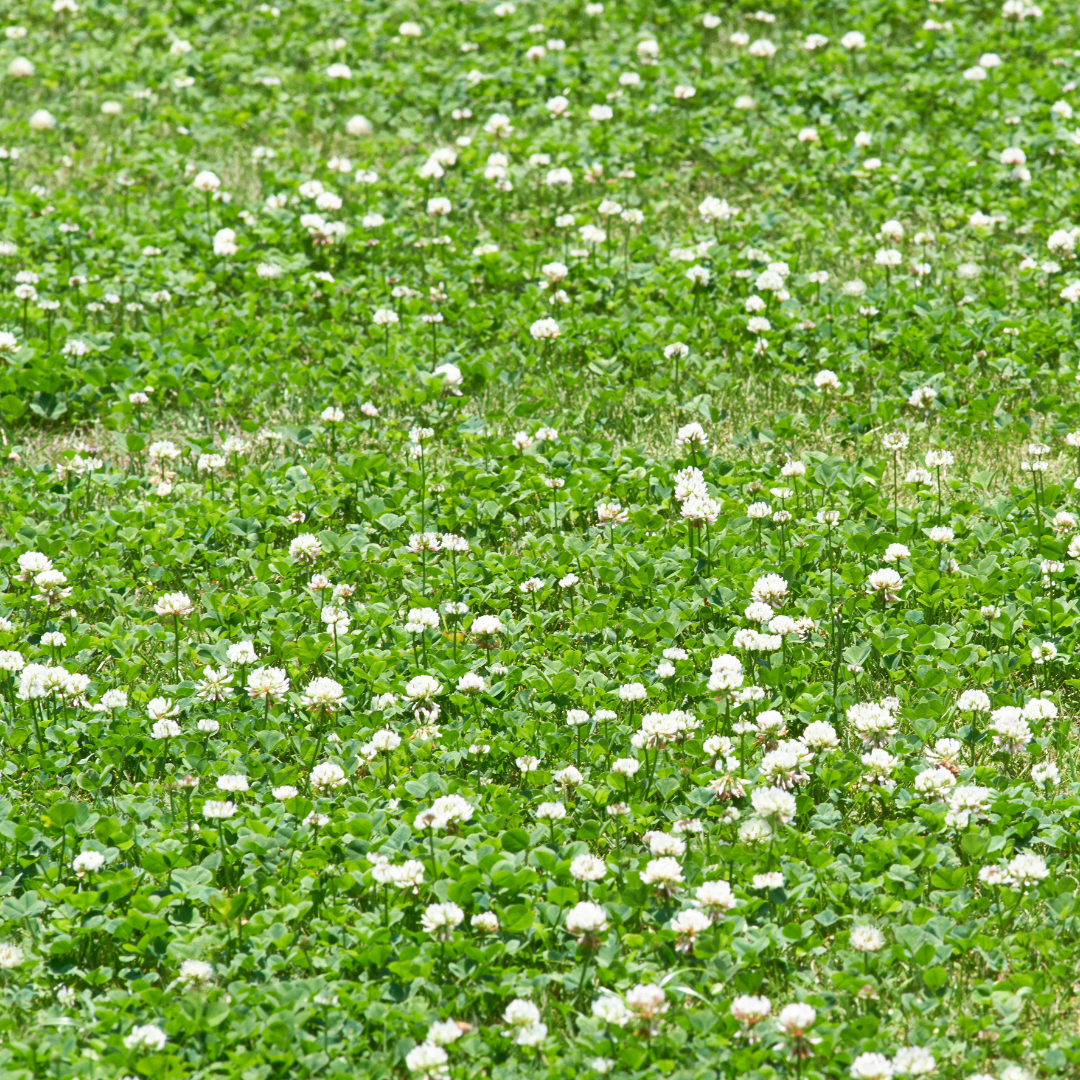A handful of the “lawn ornaments” that will be featured in this blog series. Top row (left to right): sunshine mimosa, perennial peanut, frogfruit, and fleabane. Bottom row (left to right): pennywort, Lobelia, Florida snow, and blue-eyed grass.
Welcome to our Lawn Ornament blog series, where we explore the plethora of micro-plants that can help create a biodiverse, predominantly green, yet also delightfully colorful lawn that requires much less maintenance than a traditional grass lawn.
Many homeowners find it difficult and costly to maintain a “traditional” lawn, one largely dominated by a single grass cultivar. Embracing a biodiverse landscape can ease the frustration and save money, with the added bonus of providing ecological benefits. This “Lawn Ornament” series will provide a road map to that goal. Along the way, we’ll showcase volunteer “weeds” and commercially available ground covers that can improve upon the biodiversity of our lawns. We will also offer you tips and techniques to adopt and embrace this biodiverse approach. Breaking free from tradition, we can transform yards and neighborhoods to vibrant, beautiful mixed-mowable ecosystems.
Make sure to check out the Starter Guide: Embracing Lawn Ornaments: A Starter Guide
Clover Lawn? Is that a thing here?
At the Sarasota County Extension Office, we frequently encounter individuals keen on exploring clover lawns after seeing them on social media. It’s heartening to witness this growing interest in alternatives to monoculture turf. Up north the green living movement has been very successful with getting people to embrace clovers and dandelions. Even if these plants aren’t native to North America and usually are not the best groundcover, people have accepted they can be superior and provide better ecological benefits than monoculture turfgrass. This blog series was created to enlighten people in Florida about various groundcover alternatives available to us and so-called ‘weeds‘ that can be embraced instead of herbicided.
Let’s delve into this familiar lawn ornament, the European White Clover, scientifically known as Trifolium repens. First off, the plant doesn’t thrive well in our region even if we have charming seasonal patches of it at our Twin Lakes Office. So, before you invest into hundreds of pounds of clover seeds for Lawn Ornamentation, let’s learn about it.

Pros
Nitrogen Fixing
White clover forms a symbiotic relationship with nitrogen-fixing bacteria, allowing it to convert atmospheric nitrogen into a form usable by plants. This natural nitrogen fixation enriches the soil, promoting healthy plant growth without the need for synthetic fertilizers.
Low Maintenance
White clover requires minimal care compared to traditional grass lawns. Producing its own nitrogen it never needs fertilization. If it is in the right spot, likely if it naturally occurs in your lawn, it will not need supplemental irrigation.
Ecological Benefits
An excellent food forage for both herbivores and pollinators. Mammals such as rabbits, goats, and cattle love eating the foliage. The nectar is loved by bees, butterflies, and other pollinators.
Cons

Summer Heat Sensitivity
A significant drawback of hop clover is its susceptibility to summer heat. As a winter annual, it thrives in cooler temperatures but tends to wither and die off during the hotter months. This seasonality may limit its appeal as a year-round groundcover. It does complements other lawn ornaments well, such as Sunshine Mimosa which can be winter dormant. Remember, a biodiverse lawn is a healthy lawn and the best for sustainability and ecology.
Non-Native Status
White clover is not native to the Americas, it is a native of the Old World, primarily Europe and Asia. It was likely brought here as a pasture plant due to its nitrogen fixing ability. While it can offer ecological benefits even as a nonnative plant, native groundcovers are generally preferable for better supporting the local flora and fauna of our great state. UF/IFAS Assessment of Nonnative Plants in Natural Areas has concluded so far it is not a problem species and has actually declined over the years, likely due to our changing climate. It will be assessed again in 2027.
Conclusion
In conclusion, while white clover offers several advantages as a lawn replacement in Florida, it’s crucial to weigh its benefits against potential drawbacks. Careful consideration of local conditions and a commitment to responsible landscaping practices can help maximize the positive impact of white clover in lawn alternatives. White Clover can succeed in well drained, fertile soil with constant moisture in a temperate microclimate. Which can be a rare combination to find in our area. So, in conclusion, at our office, we advocate for embracing native alternatives such as Frogfruit and Sunshine Mimosa instead of purchasing clover seeds and being disappointed in the results.
Resources
- UF/IFAS Assessment of Non-Native Plants: https://assessment.ifas.ufl.edu/assessments/trifolium-repens/
- UF/IFAS EDIS Document on White Clover: https://edis.ifas.ufl.edu/publication/AA198
- White Clover Management in South Florida: https://sfbfp.ifas.ufl.edu/articles/article_2012_may.shtml
During the preparation of this work, the author used ChatGPT to help build the blog post. After using this tool/service, the author reviewed and edited the content, and takes full responsibility for the content of the publication.
Source: UF/IFAS Pest Alert
Note: All images and contents are the property of UF/IFAS.




